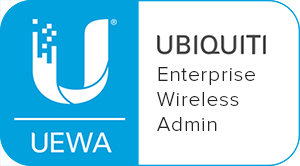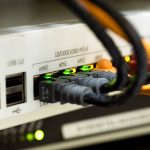46 Tech Terms & ISP Abbreviations In Alphabetical Order
Common tech terms and abbreviations to cut through the technical jargon and expand acronyms. Understand what your IT department or Internet Service Provider is talking about – that’s ISP for short.
aDSL – Asymmetric Digital Subscriber Line. A data communications technology that uses copper based telephone lines for transmission. It’s a distance sensitive service, meaning your Internet speed will depend on your location from a central telephone exchange.
ARIN – American Registry For Internet Numbers. A non-profit organization which manages and controls the allocations of IP addresses in America and Canada.
ASP – Application Service Provider. A company that provides software applications to customers over the Internet.
Also known as Active Server Page. This is a page on a website that might contain scripts as well as standard HTML.
ASP.NET – A set of website development tools built and offered by Microsoft. Built with the .NET framework, it uses programs such as Visual Studio.
AWS – Amazon Web Services. A cloud services platform offered by the company Amazon. 165 different service offerings available. Connected from data centers all over the world. Check more AWS FAQs.
B2B – Business To Business. Marketing term used to describe sales or transactions or service exchanges that are focussed on businesses only.
B2C – Business To Consumer. Marketing term used to describe sales or transactions or service exchanges that are focussed on consumers only.
B2G – Business To Government. Marketing term used to describe sales or transactions or service exchanges that are focussed on governments only.
CRM – Customer Relationship Management. A system or service to manage current and future customers of a business. For example; Salesforce.com.
DNS – Domain Name System. This system allows the association of a website name to an IP (Internet Protocol) address, so we don’t have to remember an IP address all the time.
EFM – Ethernet In The First Mile. A computer networking protocol between a telecommunications provider and a customer’s location.
EoC – Ethernet Over Copper. A form of Ethernet connection that uses twisted copper telephone wire for transmission of data packets.
FCC – Federal Communications Commission. Government authority which regulates all national and international communications over radio, TV, internet and more.
FTTB – Fiber To The Business / Basement / Building. A type of fiber optic cable installation that connects to a single point on a shared property or building. The fiber can then be shared via other cables to individual offices or homes. We offer this service and call it fiberIVY.
FTTC – Fiber To The Curb / Closet / Cabinet. Seen as an interim solution prior to a full scale roll-out of Fiber To The Home. Can be used to deliver multiple services such as voice and cable TV.
FTTD – Fiber To The Desktop. A fiber optic connection which originates in a main computer room and terminates at or near a user’s desktop, via a terminal or converter.
FTTH – Fiber To The Home. A fiber optic connection which reaches a home user, (meaning a box on the outside wall). Can be used to deliver TV, data and voice services.
FTTN – Fiber To The Node / Neighborhood. A fiber connection which finishes on a street cabinet, with the final connection to a user being over copper. Sometimes used as an interim solution prior to FTTH roll-out.
FTTP – Fiber To The Premises. Used as a term to describe both FTTH and FTTB. Basically, fiber connections to home and / or fiber optic connections for businesses. We offer this service to businesses and call it metricFIBER.
Gbps – Gigabit Per Second. Bit rate or data rate measurement of a computer network. A 1Gbps fiber Internet connection = 1000Mbps (Megabits Per Second).
Gig – Gigabit. In data communications, a Gigabit is equal to one billion bits.
HTML – Hypertext Markup Language. A type of system used to markup text files to add fonts, color, graphics, links etc. Commonly used by web designers.
HTTP – Hypertext Transfer Protocol. An application protocol for information systems and the data communication foundation for the web.
IaaS – Infrastructure As A Service. A cloud computing service model which may cover virtual machines, servers, storage, load balances and networks.
IoT – Internet Of Things. A network of devices or physical objects connected via the Internet.
IP – Internet Protocol. Often used with IP address. An IP address is a number assigned to any device which connects to the Internet. Check your IP address and find out more about IP addresses by clicking on the link.
ISP – Internet Service Provider. A company that provides Internet and often telephone services as well.
Kbps – Kilobits Per Second. A measurement of data transfer speed. Often associated with modems or Internet connections. 1Kbps = 1000 bits per second.
LAN – Local Area Network. A computer network that connects computers within a certain area, such as an office, school, lab or home.
MAN – Metropolitan Area Network. Larger than a LAN, a MAN is a computer network that may cover part of a city, a city or even designated areas around a city.
Mbps – Megabits Per Second. A measurement of data transfer speed. 1Mbps = 1000 kilobits.
Meg – Megabyte. A unit of information (often data) which is roughly equal to 1 million bytes.
NAP – Network Access Point. A network facility where ISPs could connect with one another to ‘peer’ For example, this organization; https://sfmix.org/
NSP – Network Service provider. A business or company that sells Internet access – very similar to an ISP.
PaaS – Platform As A Service. A cloud computing service model which may cover execution runtime, database, web server and development tools.
PBX – Private Branch Exchange. A phone system used to make both internal employee to employee calls and external phone calls.
PPPoE – Point To Point Protocol Over Ethernet. A specification which allows the connection of multiple computer users over a local area network.
RAM – Random Access Memory. A form of computer data storage. Not to be confused with the Daft Punk Album, ‘Random Access Memories’.
Image courtesy of Wikipedia.
SaaS – Software As A Service. A cloud computing model which may cover CRM, email, virtual desktops, phone communication systems and games.
SIP – Session Initiation Protocol. A communication protocol which allows video and voice communications to be controlled over the Internet. For example, SIP Trunks allows end users to send / receive video, voice and other multi-media.
SSL – Secure Sockets Layer. Security technology which encrypts links commonly between web servers and browsers.
LTE – Long Term Evolution. A 4G mobile / wireless communications standard, that is faster than 3G, but not as fast as the 5G mobile standard. LTE provides faster connection speeds than 3G and 4G over devices such as smartphones and tablets.
VoIP – Voice Over Internet Protocol. A method and technology used to deliver voice communications using an Internet connection. For example, Skype, or Viber.
VoFM – Voice Over Fasmetrics. Our privately hosted voice network, which uses VoIP protocol, but does not travel over the public Internet. This allows enhanced voice quality.
VPN – Virtual Private Network. A secure private network, which uses a public network such as the Internet to connect users.
WAN – Wide Area Network. A network that covers a large area. For example, a telecommunications network that may cover a metro, national or even international area.
Wi-Fi / WiFi / Wifi / Wi-fi – Wireless Fidelity. Local wireless technology that allows devices to exchange data. Read more about our customer Wi-Fi Alliance and what they do, here; https://www.wi-fi.org/
3G – (3rd generation). A collection of 3rd generation cellular data technologies.
4G – (4th generation). A collection of 4th generation cellular data technologies, which succeeded 3G.
5G – (5th generation). A collection of 5th generation cellular data technologies, which succeeded 4G. The current mobile standard available, as of 2019 and beyond in many nations.
About Fastmetrics, Inc. Building & Business ISP
Since 2002, Fastmetrics is the Bay Area’s only dedicated business ISP. We provide telecommunication services in California and the San Francisco Bay Area. Reliable service – backed by better live and local support. From install to 24-7 proactive monitoring, get treated like a VIP customer. Not a number by a faceless call center. We specialize in managed business internet and phones, dedicated high speed business fiber internet, business WiFi, SIP voice solutions / UCaaS and managed network services. We are a Microsoft and Cisco Meraki Partner. Our team are Certified Cisco Specialists, Ubiquiti Enterprise Wireless Accredited and Polycom Authorized Solution Advisors. We take care of your business network, so you can focus on growth.









